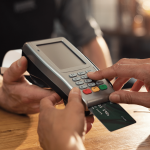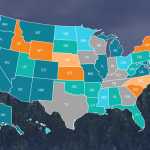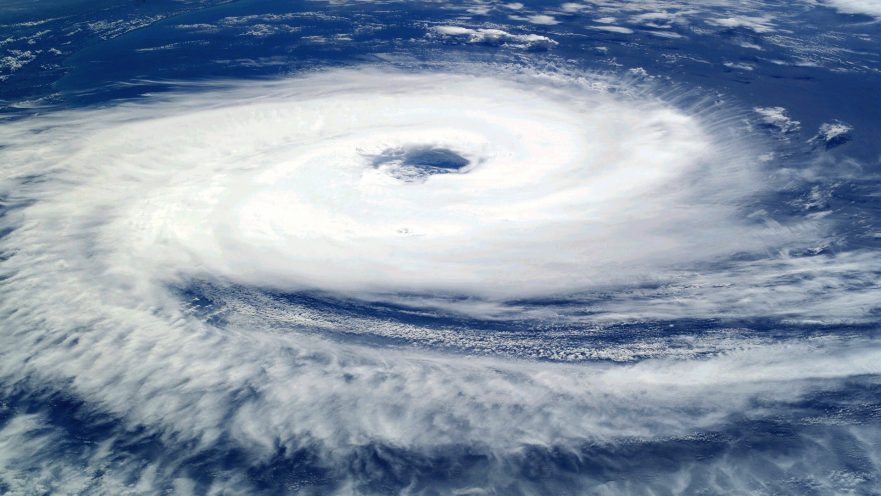Hurricane season starts on June 1st, and every year, hurricanes damage businesses in states like Florida, Texas, Louisiana, and along the East coast. While damages caused by hurricanes can be catastrophic for any business, they can create conditions that are especially dangerous for high-risk businesses. High-risk businesses include those with valuable merchandise and large amounts of currency onsite, such as businesses in the cannabis, pawn, or jewelry industries and can become targets for looting and crime during emergency situations. Although it is impossible to avoid all damages, it is possible to better protect the business and prepare for hurricane season to ensure that the business remains successful after a crisis.
Prepare for Hurricane Season
Although there is typically warning before a hurricanes or tropical storm hits, it is still important for high-risk businesses to prepare for hurricane season prior to enduring a storm. Prior to the storm, employees should be instructed to board up or otherwise secure the store’s glass front or doors. The manager should deposit currency in the bank, if possible, and check the alarm back-up system and other security equipment to ensure they are fully operational before leaving.

Important: If the store is to be closed due to any emergency situation, the safe should be filled with as much of the company assets as possible, including cash, cannabis, jewelry, small general merchandise loans, or valuable inventory before leaving. The vault or safe should be used as a “lifeboat” during an emergency. Vaults and safes are designed to withstand long periods of attacks from thieves and most will not be able to get into a safe no matter how long they attack it.
Flooding, including flash flooding from area creeks, lakes, and rivers may occur with or without warning during a hurricane. The store should monitor weather updates during a hurricane and have a plan as to how to move merchandise to minimize its exposure to water. All electrical devices, such as TVs, ENVRs, computers, cash registers, and other security or electrical equipment should be unplugged and moved to an area that would not be affected by the water. The manager should monitor the water level in the area as well as any low-water crossings surrounding the store and should consult the owner as to when the store should be evacuated. Nobody should be driving during flash flooding conditions.
Evacuation Procedures
During a hurricane or other emergency situation, an evacuation may be determined necessary by local officials. Follow these evacuation procedures for hurricanes or weather-related emergencies:
- Post a diagram of all evacuation routes in the break area or back room.
- Direct all persons to evacuate the building through the nearest safe exit.
- Assist anyone with mobility issues.
- Ensure no one is left inside the building by conducting a headcount of employees, customers, and visitors.
- Employees who have been assigned a safety function should be the last to exit the building whenever possible.
- Assign one employee to take the first-aid kit as they leave the building.
- Notify the police and fire department by dialing 911.
Emergency Action Plan
It is important for a high-risk business to have a well developed emergency action plan prior to an emergency situation. According to studies conducted by the Gartner Group, 60% of businesses are unprepared for disasters and emergencies, and 40% of companies that experience a disaster go out of business within five years. Without a well-defined emergency action plan, businesses struggle or fail to remain in operation after an emergency.
The purpose of an emergency action plan is to organize actions during an emergency. Well-developed workplace emergency strategy and proper employee training may result in fewer injuries to employees and customers and less structural damage to business. The following three sections should be included in an emergency action plan: (1) Emergency preparedness; (2) Emergency response; and (3) Disaster recovery.
It is the responsibility of the owner and management team to evaluate an emergency situation, ensure that appropriate action is taken, determine if outside support is needed, an summon that support, if necessary. Management should have valid phone numbers for all employees. They should also post their own mobile and home phone numbers in case employees need to contact them in the event of an emergency.
Emergency Supplies
Every store should have “emergency supplies” ready in case of an emergency. These supplies should be stored in the manager’s office or in a safe, accessible location in the back of the store. Emergency supplies should include:
- Battery-operated flashlight
- Battery-operated radio
- Extra batteries to fit the flashlight and radio
- First-aid kit
- Water
- Blankets
- Fire extinguisher
- Emergency whistle or air horn
How can Sapphire Risk help?
Tony Gallo and the team at Sapphire Risk Advisory Group has over 30 years of security experience and expertise. We have written hundreds of emergency preparedness plans and offer risk assessments of high-risk businesses following emergency situations or robberies. Follow us on social media to stay up to date with medical marijuana industry updates!
- California Senate Bill 69 Adds CEQA Requirements for New Cultivators

- Top 5 Cannabis Security and Surveillance Violations

- Peace of Mind in the Retail Sector: Facility Security

- Opportunities in the Ohio (O-High-O) Cannabis Market

- Building Security and Trust: Verifying Identification and Payments

- The Importance of Loss Prevention

- Thoughts to Improve Cannabis Security Regulations Across the Nation

- Opportunities in the Minnesota Cannabis Market

- U.S. Cannabis Legalization 2023 Update

- How to Present Your Cannabis Business Vision to Your City


